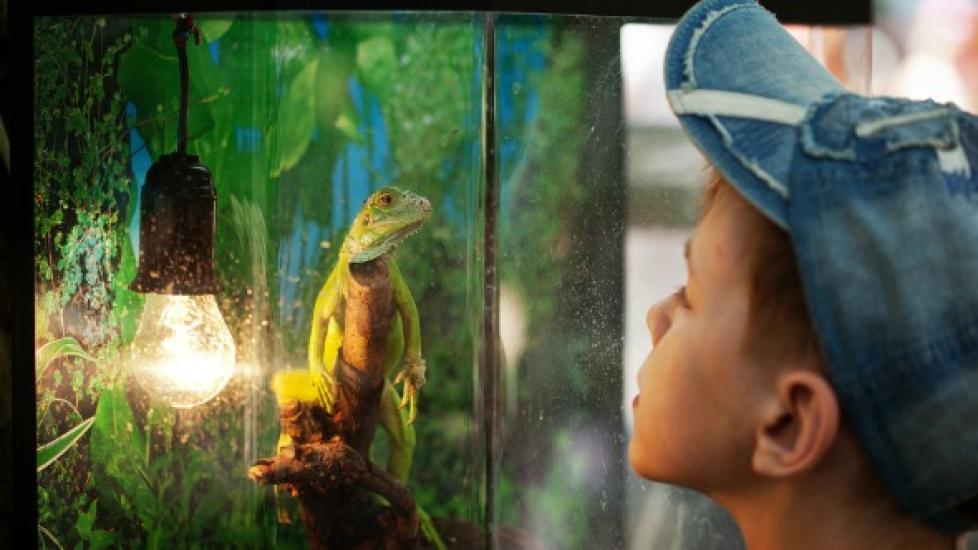The Terrarium: A Basic Guide
How to Set Up a Reptile Terrarium
If you’re interested in owning a reptile (or even a tarantula), you’re going to need a terrarium to keep it in.
A terrarium is simply a container designed to hold small plants or animals in a controlled environment. It’s like having a small piece of an alien landscape in your home, one in which you can watch that landscape from your side and view something in its natural habitat.
All Things Are Not Equal
Before purchasing the reptile, choose the terrarium. But remember, different reptiles have different environmental needs, so make sure the terrarium will accommodate the type of reptile you seek.
Size Matters
Some snakes and lizards can grow quite large, and others like to have a lot of space in which to move around, as well as have different areas for sunning and areas to hide, cool off in, and even swim. So pick the terrarium according to how large your pet will become, not how large it is now.
Escape Proof
Reptiles just love to escape! To prevent your reptile from pulling a "Harry Houdini," many experts suggest aquariums or glass boxes with wooden frames. But whatever you choose -- whether a budget-friendly fish aquarium or something more custom-made -- make sure the top is secure. For additional security, cover the enclosure with wire mesh or a fly screen. Some even recommend a little petroleum jelly spread around the top rim of the enclosure to aid in stopping erstwhile escapees.
Heat and Light
Some reptiles have very particular needs when it comes to heating and lighting. Therefore, purchasing the right heat lamp and lighting for your new pet is vital, and depending on the reptile in question, some are able to get their heat and light from the same source. Others, meanwhile, require a separate heat pad or heat tape, which is usually constructed of foil strips wrapped in durable plastic film. If you decide to use heat tape, it is important that the temperature be regulated by a thermostat or a rheostat. This will extend the product's life and prevent any accidental burns.
The Humidity Factor
If your reptile requires a humid environment, the enclosure must have a closed-top lid, as a mesh top cannot maintain a proper level of humidity. However, do not forget to drill a few holes in the lid for ventilation purposes. Then, cut a hole the size of the heat lamp out of the enclosure's top and carefully place the lamp in it. Some people like to install a covered computer fan, too.
The Bottom Line
Your pet's terrain must be familiar to what it would find in its natural habitat. This could be anything from spongy and damp materials to a sandy substrate with digging areas to an environment that offers the reptile an area for swimming and dry land. The latter can be done by sloping the substrate into water, so that you can offer both a swimming pool and a place to dry off.
Finishing Touches
You may want to put a background picture on the back of the terrarium. Not only does this offer your pet a feel of being home in nature, but it spruces up the place. Fill the tank with whatever plants, rocks, branches, and other objects that are appropriate for the reptile of your choice.
Remember, these are only the basics of setting up a terrarium. There are many species of reptiles and each will have its own requirements. But we know that these tips will help your pet lead a healthy and happy life in its new home.
